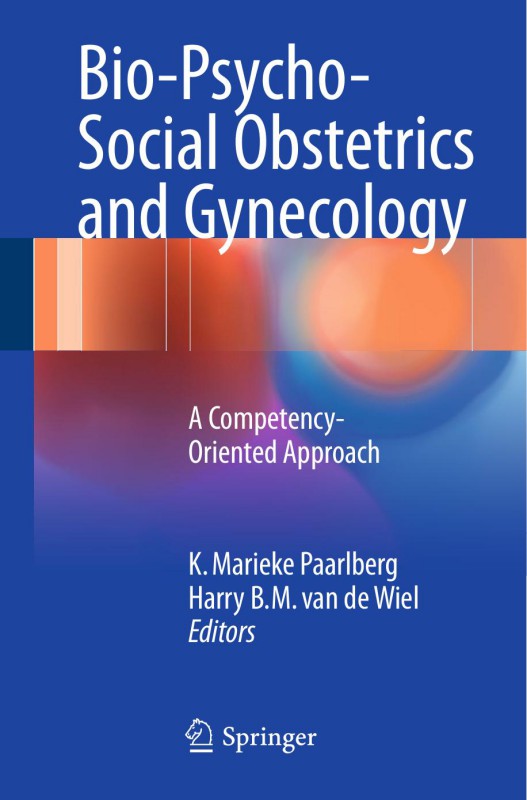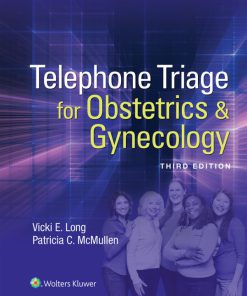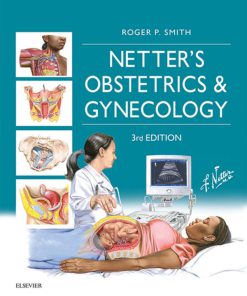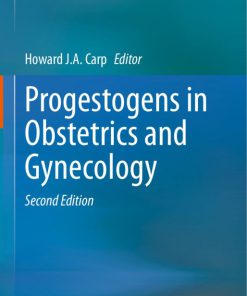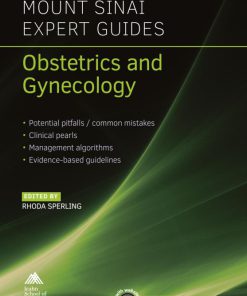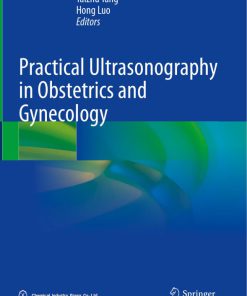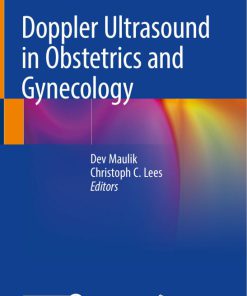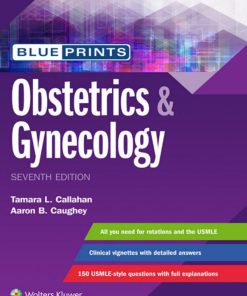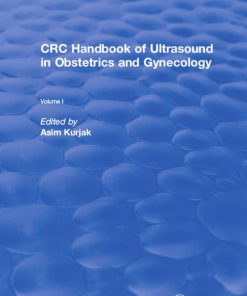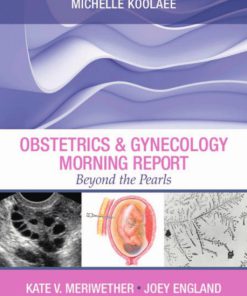(Ebook PDF) Bio Psycho Social Obstetrics and Gynecology 1st edition by Marieke Paarlberg, Harry van de Wiel 3319404040 9783319404042 full chapters
$50.00 Original price was: $50.00.$25.00Current price is: $25.00.
Authors:K. Marieke Paarlberg , Series:Gynecology & Obstetrics [88] , Author sort:Paarlberg, K. Marieke , Languages:Languages:eng , Published:Published:Feb 2017 , Publisher:Springer
Bio-Psycho-Social Obstetrics and Gynecology 1st edition by K. Marieke Paarlberg, Harry B.M van de Wiel – Ebook PDF Instant Download/DeliveryISBN: 3319404040, 9783319404042
Full download Bio-Psycho-Social Obstetrics and Gynecology 1st edition after payment.
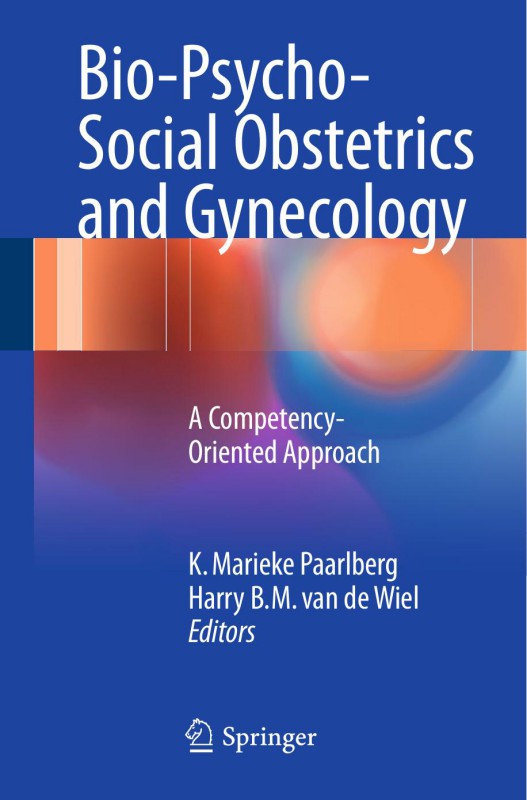
Product details:
ISBN-10 : 3319404040
ISBN-13 : 9783319404042
Author : K. Marieke Paarlberg, Harry B.M van de Wiel
This book will assist the reader by providing individually tailored, high-quality bio-psycho-social care to patients with a wide range of problems within the fields of obstetrics, gynaecology, fertility, oncology, and sexology. Each chapter addresses a particular theme, issue, or situation in a problem-oriented and case-based manner that emphasizes the differences between routine and bio-psycho-social care. Relevant facts and figures are presented, advice is provided regarding the medical, psychological, and caring process, and contextual aspects are discussed. The book offers practical tips and actions within the bio-psycho-social approach, and highlights important do’s and don’ts. To avoid a strict somatic thinking pattern, the importance of communication, multidisciplinary collaboration, and creation of a working alliance with the patient is emphasized. The book follows a consistent format, designed to meet the needs of challenged clinicians.
Bio-Psycho-Social Obstetrics and Gynecology 1st Table of contents:
Part I: Obstetrics, Gynecology, Fertility and Sexology
1: A Woman Afraid to Deliver: How to Manage Childbirth Anxiety
1.1 Introduction and Aims
1.2 Definition in Lay Terms
1.3 Didactic Goals
1.4 Facts and Figures: Definitions, Assessment, and Prevalence
1.4.1 What Is the Definition of Childbirth Anxiety?
1.4.2 How Is Childbirth Anxiety Assessed?
1.4.3 What Is the Prevalence of Childbirth Anxiety?
1.5 Etiology and Pathogenesis
1.5.1 Where Does Childbirth Anxiety Come From?
1.5.1.1 Evolutionary Developed Reaction Tendencies
1.5.2 How Do Anxiety Problems in General Develop?
1.5.3 What Makes the Difference Between People Who Develop an Anxiety Disorder and Those Who Do
1.5.4 What Are the Basic Contributors to the Origin of Anxiety Disorders?
1.5.5 How Does Specific Phobia Develop?
1.6 Specific Diagnostic Aspects
1.6.1 When Does a Woman Screen Positive on the W-DEQ?
1.6.1.1 Psychometric Criteria
1.6.2 What Are the Clinical Criteria for Childbirth Anxiety?
1.6.2.1 Clinical Criteria
1.6.3 When Does a Woman Have a Childbirth Phobia According to DSM-5?
1.6.3.1 Criteria for Phobic CA According to DSM-5 Criteria for Specific Phobia
1.6.3.2 The DSM System
1.6.4 Which Other Mental Problems Are Important to Differentiate from Severe/Phobic Childbirth An
1.6.4.1 Differential Diagnosis of CA
1.7 Clinical Features and Comments
1.7.1 Patients with Childbirth Anxiety
1.7.1.1 What Are the Clinical Features of Childbirth Anxiety During Pregnancy?
1.7.1.2 What Are the Clinical Features of Childbirth Anxiety During Delivery?
1.7.1.3 What Are the Risk Factors for Childbirth Anxiety?
Risk Factors and Consequences: Vicious Cycles Everywhere
1.7.1.4 How Much Does Childbirth Anxiety Influence the Process of Labor?
1.7.2 Caregivers’ Communication and Collaboration with Women with Childbirth Anxiety
1.7.2.1 What Can Be Expected from Obstetrical Health-Care Providers in Diagnostic and Assessmen
Diagnostic and Assessment Procedures: For Whom to Carry Through?
1.7.2.2 What Are the Problems in Disclosure of Severe CA?
1.8 Specific Therapeutic Aspects
1.8.1 What Methods of Treatment of Childbirth Anxiety Have Been Evaluated Scientifically?
1.8.1.1 Treatment of Maternal Anxiety
1.8.2 What Is the Main Aim for the Treatment of Severe and Phobic Childbirth Anxiety?
1.8.2.1 Specific Treatment of Severe and Phobic Childbirth Anxiety
1.8.3 What Are the Ingredients of a CBT Treatment Program for Severe and Phobic Childbirth Anx
1.9 Critical Reflection and Conclusive Remarks
1.9.1 Anxiety Disorder
1.9.2 Content of Thinking
1.9.3 Communication and Collaboration
1.9.4 Disease and Patient Management
1.9.5 Aftercare
1.10 Additional Reflection
References
2: A Woman Afraid of Becoming Pregnant Again: Posttraumatic Stress Disorder Following Childbirth
2.1 Introduction and Aims
2.2 Definition in Lay Terms
2.3 Didactical Goals
2.4 Facts and Figures: Definitions, Classification, and Prevalence
2.4.1 How Often Do Women Experience the Delivery as Traumatic?
2.4.2 When May a Delivery Be Experienced as Traumatic?
2.4.3 How Common Is PTSD Following Childbirth?
2.4.4 When Does a Woman Suffer from PTSD Following Childbirth?
2.5 Etiology and Pathogenesis
2.5.1 Can You Identify Risk Factors for the Development of PTSD Following Childbirth?
2.5.2 What Is the Natural Course of PTSD Following Childbirth?
2.5.3 What Are Possible Consequences of PTSD Following Childbirth?
2.6 Specific Diagnostic Aspects
2.6.1 How Can PTSD (Following Childbirth) Be Diagnosed?
2.6.2 What Can Obstetricians and Midwives Do to Facilitate the Diagnosis of PTSD Following Chi
2.6.3 Should We Screen for PTSD Following Childbirth?
2.6.4 What Do You Want to Know in Order to Distinguish Between PTSD and Other Conditions, i.e
2.7 Specific Therapeutic Aspects
2.7.1 How Can PTSD Following Childbirth Be Treated?
2.7.2 Can Women Be Treated During Pregnancy?
2.7.3 What Should Be Done to Minimize the Risk of Another Traumatic Experience During a Subse
2.7.4 Can We Prevent PTSD Following Childbirth?
2.8 Critical Reflection and Conclusive Remarks
References
3: A Woman Who Cannot Enjoy Her Pregnancy: Depression in Pregnancy and Puerperium
3.1 Introduction and Aims
3.2 Definition in Lay Terms
3.3 Didactic Goals
3.4 Facts and Figures: Definitions, Classification, and Prevalence
3.4.1 What Is the Definition of Perinatal Depression?
3.4.2 How to Distinguish Postpartum Depressive Symptoms from Postpartum Blues
3.4.3 What Is the Prevalence of Depression During Pregnancy and Postpartum?
3.5 Etiology and Pathogenesis
3.5.1 What Is the Pathogenesis of Perinatal Depression?
3.5.2 What Are Risk Factors for Perinatal Depression?
3.5.3 Do Hormonal Factors Play a Role in the Pathogenesis?
3.6 Specific Diagnostic Aspects
3.6.1 How Can Women at Risk for Perinatal Depression Be Screened?
3.7 Specific Therapeutic Aspects
3.7.1 What Are Evidence-Based Treatments for Perinatal Depression?
3.7.1.1 Non-pharmacological Treatment
3.7.1.2 Pharmacological Treatment
3.7.2 What Are the Risks and Benefits of Antidepressant Medication During Pregnancy?
3.7.3 Is Breastfeeding Contraindicated When Antidepressant Medication Is Continued?
3.8 Critical Reflection and Conclusive Remarks
References
4: New Mothers with Disturbing Thoughts: Treatment of Obsessive-Compulsive Disorder and of Psych
4.1 Introduction and Aims
4.2 Definition in Lay Terms
4.3 Didactic Goals
4.4 Facts and Figures: Definitions, Classifications, and Prevalence
4.4.1 Postpartum Obsessive-Compulsive Disorder
4.4.1.1 What Is the Definition of Postpartum Obsessive-Compulsive Disorder?
4.4.1.2 How to Distinguish Normative Intrusive Thoughts in Postpartum from Clinically Significant
4.4.1.3 What Is the Incidence and Prevalence of Obsessive-Compulsive Disorder?
4.4.1.4 What Are the Most Common Themes of Postpartum Obsessions and Compulsions?
4.4.1.5 What Are the Differences Between Postpartum OCD and Postpartum Depression (PPD)?
4.4.2 Postpartum Psychosis
4.4.2.1 What Is the Definition of Postpartum Psychosis?
4.4.2.2 How to Distinguish Normal Cognitive Disturbances or Dysfunctions (Confusion, Memory Problem
4.4.2.3 What Is the Incidence and Prevalence of Postpartum Psychosis?
4.4.2.4 What Are the Most Common Themes of Delusions in Postpartum Psychosis?
4.4.2.5 What Are the Differences Between Postpartum Psychosis and Postpartum Depression?
4.4.2.6 What Are the Symptoms Distinguishing Non-postpartum Psychosis from Postpartum Psychosis?
4.4.2.7 What Is the Postpartum Psychosis Classification in Leading Mental Health Diagnostic Manual
4.4.2.8 What Is the Differential Diagnosis of Postpartum Psychosis?
4.4.2.9 What Are the Differences Between Postpartum Psychosis and Postpartum Obsessive-Compulsive
4.4.2.10 What Are the Potential Consequences of Untreated Postpartum Psychosis?
4.5 Etiology and Pathogenesis
4.5.1 Postpartum Obsessive-Compulsive Disorder
4.5.1.1 What Are the Main Theories That Explain the Emergence of Obsessive-Compulsive Symptoms in
4.5.1.2 What Are the Risk Factors for Postpartum Obsessive-Compulsive Disorder?
4.5.2 Postpartum Psychosis
4.5.2.1 What Are the Potential Causes of Postpartum Psychosis?
4.5.2.2 What Are the Risk Factors for Postpartum Psychosis?
4.6 Specific Diagnostic Aspects
4.6.1 Postpartum Obsessive-Compulsive Disorder
4.6.1.1 What Are the Barriers to Symptom Disclosure?
4.6.1.2 What Are the Steps in Assessment and Referral Process on the Part of an Obstetrician?
4.6.2 Postpartum Psychosis
4.6.2.1 What Are the Steps in Diagnosis and Referral Process?
4.7 Specific Therapeutic Aspects
4.7.1 Postpartum Obsessive-Compulsive Disorder
4.7.1.1 What Does Treatment of Postpartum OCD Consist of?
4.7.1.2 What Are the Treatment Aims?
4.7.2 Postpartum Psychosis
4.7.2.1 What Are Potential Preventive Measures of Postpartum Psychosis?
4.7.2.2 What Are the Steps in Treatment of Postpartum Psychosis?
4.7.2.3 What Are the Markers of Treatment Success?
4.8 Critical Reflection and Conclusive Remarks
References
5: A Woman with a Positive Prenatal Test on Trisomy 21: Counseling in Prenatal Diagnosis
5.1 Introduction and Aims
5.2 Definitions in Lay Terms
5.2.1 Trisomy 21
5.2.2 Prenatal Tests for Trisomy 21
5.3 Didactic Goals
5.4 Facts and Figures: Definitions, Classification, and Prevalence
5.4.1 Formal Definition
5.4.1.1 Birth Defects: Trisomy 21
5.4.1.2 Which Are the Available Tests for Risk Assessment and Diagnosis of Chromosomal Aberrati
5.4.2 What Proportion of Pregnant Women Is Confronted with a Suspicious or Pathological Prenatal
5.4.3 Classification
5.4.3.1 Medical Perspective
5.4.3.2 Legal Perspective
5.4.3.3 Ethical Perspective
5.4.3.4 Psychological Perspective
5.5 Etiology and Pathogenesis
5.5.1 Risk Factors for Congenital Anomalies
5.5.2 Unfortunate Pregnancy
5.5.3 Working Model
5.6 Counseling and Care
5.6.1 Problem and Patient Orientation
5.6.2 Information Phase
5.6.2.1 Which Information and Counseling Has to Be Provided Previous to Performing Prenatal Tes
5.6.2.2 How Can the Perception and Estimation of One’s Individual Risk Be Facilitated Best?
5.6.3 Decision-Making Phase
5.6.3.1 What Is the Difference Between Effective and Preference-Sensitive Decision?
5.6.3.2 Which Topics Have to Be Broached When a Pregnant Woman/Couple Is Confronted with the D
5.6.4 Informed Consent Phase
5.6.5 Pregnancy
5.6.5.1 How Do Couples Cope with Carrying Out a Pregnancy and Giving Birth in the Case of Tr
The Patient Decides for Termination of Pregnancy
The Patient Decides to Carry Out Pregnancy
5.6.6 Delivery
5.6.7 Follow-Up Care
5.6.7.1 How Do Couples Cope with the Experience of Abortion and What Should Be Considered When
5.7 Critical Reflection and Conclusive Remarks
References
6: Parents Who Lost Their Baby: Guiding the Mourning Process in Stillbirths and Pregnancy Termina
6.1 Introduction and Aims
6.2 Definition in Lay Terms
6.3 Didactic Goals
6.4 Facts and Figures: Definitions, Classification, and Prevalence
6.4.1 Definitions
6.4.2 Historic Overview
6.5 Etiology and Pathogenesis
6.5.1 Mourning After Perinatal Loss
6.5.2 Complicated Grief
6.5.3 Grief in Perinatal Loss of One (or More) Twins
6.5.4 Grief in Late Pregnancy Termination
6.6 Specific Diagnostic Aspects
6.6.1 Assessment of Stillbirth
6.6.2 Neonatal Death
6.6.3 Extreme Prematurity
6.6.4 Prenatal Detection of Malformations
6.7 Specific Therapeutic Aspects
6.7.1 Funeral Rituals and Burial
6.7.2 Information to the Parents
6.7.2.1 How Long Does Mourning Last? Is Formal Psychotherapy Needed for All Cases of Perinatal Lo
6.7.3 Information to Siblings
6.8 Critical Reflection and Conclusive Remarks
References
7: A Pregnant Woman Who Could Not Stop Drinking: Management of Alcohol Abuse in Pregnancy
7.1 Introduction and Aims
7.2 Definition in Lay Terms
7.3 Didactic Goals
7.4 Facts and Figures: Definitions, Classification, and Prevalence
7.4.1 What Is the Prevalence of Alcohol Use in Pregnant Women?
7.4.2 What Is Internationally Meant by a “Standard Drink”?
7.4.3 What Is the Definition of Binge Drinking?
7.4.4 What Is the Difference Between Men and Women Drinking Alcohol?
7.4.5 Why Are People Drinking Alcoholic Beverages?
7.5 Etiology and Pathogenesis
7.5.1 How Is Alcohol Metabolized and Transferred to the Fetus?
7.5.2 What Are the Teratogenic Effects of Alcohol Use in Pregnancy?
7.5.2.1 Fetal Alcohol Spectrum Disorder (FASD) and Fetal Alcohol Syndrome (FAS)
7.5.3 Why Is It Important to Identify Women Drinking Alcoholic Beverages During Pregnancy?
7.6 Specific Diagnostic Aspects
7.6.1 How Can Pregnant Women Drinking Alcoholic Beverages Be Identified?
7.6.1.1 History Taking
7.6.1.2 Self-Report Questionnaires
7.6.1.3 Biological Tests
7.6.2 How Do Health Caregivers Have to Take Anamnesis Concerning Alcohol Use During Pregnancy?
7.7 Specific Therapeutic Aspects
7.7.1 What Should Be the First Things to Address When a Caregiver Is Confronted with Alcohol U
7.7.2 Are There Medicinal Options in Treating Pregnant Women Who Drink Alcohol?
7.7.3 What Are the Recommendations in Different Countries Concerning Alcohol Use in Pregnancy?
7.7.4 How Are Health Care Policies in Different Countries Carried Out?
7.8 Critical Reflection and Conclusive Remarks
References
8: A Young Woman Asking for Labia Reduction Surgery: A Plea for “Vulvar Literacy”
8.1 Introduction and Aims
8.2 Definition in Lay Terms
8.3 Didactic Goals
8.4 Facts and Figures: Definitions, Classification, and Prevalence
8.4.1 What Is the Normal Morphological Range and Size of the Different Parts of the External
8.4.2 How Frequently Do Women Request Labia Reduction Surgery?
8.4.3 Which Complaints Are Most Common in Women Requesting Labia Reduction Surgery?
8.4.4 What Are the Expectations of Women Seeking Surgery?
8.5 Etiology and Pathogenesis
8.5.1 Which Developmental (Embryological) Factors or Later Physical Traumata May Lead to Dysmorphi
8.5.2 Which Sociocultural Factors May Be Addressed Influencing the Request for Labia Reduction S
8.5.3 What Are Characteristics of Women Seeking Labia Reduction Surgery?
8.6 Specific Diagnostic Aspects
8.6.1 Which Medical-Ethical Considerations Should Be Made?
8.6.2 Which Issues Should Be Addressed in History Taking?
8.6.3 Which Physical Examinations Should Be Carried Out?
8.7 Specific Therapeutic Aspects
8.7.1 How Is Labia Reduction Surgery Performed?
8.7.2 Which Contraindications Can Be Identified?
8.7.3 What Are the Results of Labia Reduction Surgery?
8.8 Critical Reflection and Conclusive Remarks
References
9: A Woman Struggling for Control: How to Manage Severe Eating Disorders
9.1 Introduction and Aims
9.2 Definition in Lay Terms
9.3 Didactical Goals
9.4 Facts and Figures
9.4.1 What Are the Definitions of Eating Disorders?
9.4.2 How Common Are Eating Disorders?
9.4.3 What Are Special Risk Groups?
9.4.3.1 Adolescents and Young Women
9.4.3.2 Middle Age
9.4.3.3 Pregnant Women
9.4.4 Which Physical Complications May Occur?
9.5 Etiology and Pathogenesis
9.5.1 What Are the Symptoms of an Eating Disorder (AN, BN, BED)?
9.5.2 Which Risk Factors Are Associated with Eating Disorders?
9.5.3 Which Sociocultural Factors May Play a Role?
9.6 Specific Diagnostic Aspects
9.6.1 What Are the Diagnostic Key Questions?
9.6.2 Which Symptoms Have to Be Checked?
9.6.3 Which Physical and Laboratory Examinations Should Be Made?
9.7 Specific Therapeutic Aspects
9.7.1 Which Specific Therapeutic Aspects Need to Be Considered?
9.7.1.1 Interdisciplinary Collaboration
9.7.1.2 Need of Hospitalization
9.7.2 What Is Required for a Successful Outpatient Setting?
9.8 Critical Reflections and Conclusive Remarks
References
10: A Woman with Inexplicable Mood Swings: Patient Management of Premenstrual Syndrome
10.1 Introduction and Aims
10.2 Definition in Lay Terms
10.3 Didactic Goals
10.4 Facts and Figures: Definitions, Classification, and Prevalence
10.4.1 What Is the Formal Definition of Premenstrual Disorder?
10.4.2 What Proportion of Menstruating Women Has Problematic Premenstrual Emotional and/or Somatic
10.4.3 What Is the Difference Between Premenstrual Syndrome and Premenstrual Dysphoric Disorder
10.4.3.1 Core Premenstrual Disorders
10.4.3.2 Variant Premenstrual Disorders
10.5 Etiology and Pathogenesis
10.5.1 What Are Some of the Pathogenetic Theories of Premenstrual Disorder?
10.5.1.1 Risk Factors
10.5.1.2 Onset Characteristics
10.5.1.3 Working Model
10.6 Specific Diagnostic Aspects
10.6.1 What Diagnostic Tool Is Confirmatory for Diagnosis of a Premenstrual Disorder (PMD)?
10.6.2 Indication Phase
10.6.3 Informed Consent Phase
10.7 Specific Therapeutic Aspects
10.7.1 Treatment Summary
10.7.2 Problem and Patient Orientation
10.7.3 What Are the Therapeutics That Have the Most Robust Evidence Base?
10.7.3.1 Antidepressants (Level A)
10.7.3.2 Oral Contraceptives (Level A)
10.7.3.3 Estrogen (Level B)
10.7.3.4 Gonadotropin-Releasing Hormone (GnRH) Agonists (Level A)
10.7.3.5 Hysterectomy and Bilateral Salpingo-Oophorectomy (BSO) (Level C)
10.7.3.6 Anxiolytics (Level B)
10.7.3.7 Nonpharmacological [10, 13]10.7.3.8 Other Treatments
10.8 Evaluation Phase
10.8.1 Does It Matter Whether Women Try a Psychotropic or Hormonal Treatment First?
10.8.2 Should Women with Premenstrual Disorders Pursue Treatment with a Mental Health Clinician,
10.9 Critical Reflection and Conclusive Remarks
References
11: A Woman Who Suffers Always and Forever: Management of Chronic Pelvic Pain
11.1 Introduction and Aims
11.2 Definition in Lay Terms
11.3 Didactic Goals
11.4 Facts and Figures: Definitions, Classification, and Prevalence
11.4.1 The Course of Chronic Pelvic Pain
11.4.2 Pain Persistence
11.5 Etiology and Pathogenesis
11.5.1 Somatic Factors
11.5.2 Psychological Factors
11.5.3 A Biopsychosocial View
11.6 Specific Diagnostic Aspects
11.6.1 Step 1: Pain History
11.6.1.1 What Should Be Known About Pain When a Patient Presents with the Complaint of Chronic
11.6.2 Step 2: Ideas About Pain and Coping with Pain
11.6.2.1 What Are the Questions to Address a Patient’s View on Pain and the Way She Is Copin
11.6.3 Step 3: Consequences
11.6.3.1 What Are the Questions to Address the Cognitive, Emotional, Behavioral, Physical, and S
11.6.4 Step 4: Reorientation
11.6.4.1 What Are Essential Ingredients to Be Able to Support the Patient with Chronic Pelvic P
11.6.5 Step 5: Pain Management
11.7 Specific Therapeutic Aspects
11.7.1 Surgical Treatment
11.7.2 Nonsurgical Treatment
11.8 Conclusion
11.9 Critical Reflection and Conclusive Remarks
References
12: A Woman Who Has Been Cut: Female Genital Mutilation from a Global Perspective
12.1 Introduction and Aims
12.2 Definition in Lay Terms
12.3 Didactic Goals
12.4 Facts and Figures: Definitions, Classification, and Prevalence
12.4.1 What Is the Background of Female Genital Mutilation?
12.4.1.1 Rituals Around Pregnancy and Childbirth
12.4.2 How Is Female Genital Mutilation Classified and Described?
12.5 Sociological Aspects
12.5.1 Why Is Female Genital Mutilation a Violation Against Human Rights?
12.5.2 What Is the Effect of Migration on the Women Who Underwent Female Genital Mutilation?
12.5.2.1 Migration and FGM in Western Europe: In the Context of African Women
12.5.2.2 Fighting Against FGM in the African Context
12.5.2.3 Fighting Against FGM in the European Context
12.6 Prevention
12.6.1 How Can Female Genital Mutilation Be Prevented?
12.6.2 The Netherlands: The Dutch Chain Approach
12.6.3 Belgium: Multidisciplinary Guidelines for Professionals
12.6.4 Cyprus, Portugal, Italy, Ireland: United to End FGM (UEFGM)
12.7 Protection
12.7.1 The Netherlands: Document “Statement Opposing FGM”
12.7.2 United Kingdom (UK): Asylum Policy Instruction
12.8 Prosecution
12.8.1 Belgium: Female Genital Mutilation Prevention Kit, Decision Tree
12.9 Provision of Services
12.9.1 How Should Healthcare Givers Respond to Women Who Underwent Female Genital Mutilation?
12.10 Specific Diagnostic Aspects
12.10.1 What Are the Medical, Obstetrical, and Psychosocial Consequences of Female Genital Mutila
12.10.2 Which Issues Have to Be Addressed in History Taking?
12.10.3 What Items Should Be Paid Attention to at Physical Examination?
12.11 Specific Therapeutic Aspects
12.11.1 Which Therapeutic Measures Can Be Taken if There Are Complications?
12.11.2 Is Reconstructive Surgery Possible?
12.12 Critical Reflection and Conclusive Remarks
References
13: A Woman with Stress Incontinence: Urogenital Complaints and Psychosexual Consequences
13.1 Introduction and Aims
13.2 Definition in Lay Terms
13.3 Didactic Goals
13.4 Facts and Figures: Definitions, Classification, and Prevalence
13.4.1 What’s the Difference Between SUI, Urgency (Urinary) Incontinence (UUI), and Mixed (Uri
13.4.1.1 Urinary Incontinence (UI)
13.4.1.2 Stress Urinary Incontinence (SUI)
13.4.1.3 Urgency (Urinary) Incontinence (UUI)
13.4.1.4 Mixed (Urinary) Incontinence (MUI)
13.4.1.5 Coital Incontinence
13.4.2 How Often Do You Think that SUI Occurs in Women in General?
13.5 Etiology and Pathogenesis
13.5.1 What Are the Psychosexual Implications of Incontinence?
13.5.1.1 Sexual Dissatisfaction
13.5.1.2 Sexual Partner Relationship
13.6 Specific Diagnostic Aspects
13.6.1 Which Diagnostics Would You Always Use in SUI and Which Are Optional?
13.6.1.1 History Taking
13.6.1.2 Basic Investigations
Midstream Urine (MSU) Sample
Bladder Diary
Urodynamic Testing
13.6.1.3 Assessment of Quality of Life
Disease-Specific Quality of Life Questionnaires
13.6.1.4 Assessment of Sexual Function
13.6.2 Red Flag Symptoms
13.6.3 Consideration for Early Referral to a Specialist Service
13.6.4 Most Common Diagnoses Arising from the Diagnostic Process
13.7 Specific Therapeutic Aspects
13.7.1 Which Therapeutics Would You Always Use in SUI and Which Are Optional?
13.7.1.1 Conservative Management
13.7.1.2 Surgical Management
13.7.2 To Whom Would You Refer in Case of SUI and Why?
13.7.2.1 Psychosexual Counseling
13.8 Critical Reflection and Conclusive Remarks
References
14: A Couple Who Cannot Conceive: Coping with Infertility
14.1 Introduction and Aims
14.2 Definition in Lay Terms
14.3 Didactic Goals
14.4 Facts and Figures: Definitions, Classification, and Prevalence
14.4.1 How Many People Suffer from Infertility?
14.4.2 What Do You Think Are the Success Rates of Infertility Treatment?
14.4.3 Who Suffers Emotionally More from Infertility: Women or Men?
14.4.4 What Do You Think Are the Most Helpful Coping Strategies for Infertile Couples?
14.5 Etiology and Pathogenesis
14.6 Specific Diagnostic Aspects
14.6.1 How Can You Detect Which Coping Strategies Are Used by the Couple?
14.7 Specific Therapeutic Aspects
14.7.1 What Kind of Counseling Types Can Be Found in Infertility Counseling?
14.8 Critical Reflection and Conclusive Remarks
References
15: A Young Woman Facing Cancer Treatment: Shared Decision-Making in Fertility Preservation
15.1 Introduction and Aims
15.2 Definition in Lay Terms
15.3 Didactic Goals
15.4 Facts and Figures: Definitions, Classification, and Prevalence
15.4.1 What Are the Indications for Fertility Preservation?
15.4.2 How Many Girls and Women Have an Indication for Fertility Preservation?
15.4.2.1 Cancer in Girls and Young Women
15.4.3 Which Techniques for Fertility Preservation Are Available?
15.4.3.1 Ovarian Transposition
15.4.3.2 Vitrification of Oocytes
15.4.3.3 Cryopreservation of Embryos
15.4.3.4 Cryopreservation of Ovarian Tissue
15.5 Counseling and Care
15.5.1 How to Counsel Patients?
15.5.2 What Is the Emotional Impact of Impaired Fertility in Cancer Patients?
15.5.2.1 Emotional Roller Coaster
15.5.3 Which Other Factors Also Play a Role in Decision-Making on Fertility Preservation?
15.5.3.1 The Threat of Death and the Wish for a Child
15.6 Referral to a Specialist
15.6.1 What Are the Most Important Medical Pros and Cons of the Current Fertility Preservation
15.6.1.1 Counseling by the Fertility Specialist
15.6.1.2 Knowledge of Doctors
15.6.1.3 Confidence in Discussing These Issues with Patients
15.6.1.4 Providing Information
15.6.1.5 Providing Opportunity for Referral
15.7 Critical Reflection and Conclusive Remarks
References
16: A Couple Who Considers Artificial Reproductive Techniques: Psychosocially Informed Care in Repr
16.1 Introduction and Aims
16.1.1 What Is Infertility and How Common Is It?
16.1.2 What Is Assisted Reproductive Technology and How Commonly Used Is It?
16.2 Definition in Lay Terms
16.3 Didactic Goals
16.4 Facts and Figures: Psychosocial Aspects of Infertility and Assisted Reproductive Technology
16.4.1 What Are the Potential Psychological Consequences of Infertility and Assisted Reproductiv
16.4.2 What Is the Nature of Psychological Distress Among Couples Seeking Assisted Reproductive
16.4.3 What Is the Evidence for “Psychogenic Infertility”?
16.4.4 How Do Women and Men Typically Differ in Their Psychological Responses to Infertility and
16.4.5 What Are Some of the Consequences of Psychological Distress in Women and Men Seeking As
16.4.6 How Can the Clinician Promote Psychological Wellbeing in Couples Seeking Assisted Reproduc
16.4.7 How Would You Explain the Chance of Success of Assisted Reproductive Technology to an
16.5 Specific Therapeutic Aspects and Tips and Tricks
16.5.1 What Are Some Useful Techniques for Building a Therapeutic Alliance with Couples Experien
16.5.2 What Can Clinicians Do to Manage Their Own Personal Reactions?
16.6 Critical Reflection and Concluding Remarks
References
17: A Woman Who Never Could Have Coitus: Treatment of Lifelong Vaginismus
17.1 Introduction and Aims
17.2 Definition in Lay Terms
17.3 Didactic Goals
17.4 Facts and Figures: Definitions, Classification, and Prevalence
17.5 Etiology and Pathogenesis
17.5.1 Somatic Factors
17.5.2 Pelvic Floor Muscle Involvement
17.5.3 Sexual and Psychological Factors
17.5.4 Fear-Avoidance Model of Vaginismus (FAM-V)
17.6 Specific Diagnostic Aspects
17.6.1 History Taking
17.6.2 Physical Examination
17.6.2.1 Evaluation of Vaginistic Response or Pelvic Floor Hypertonicity
17.6.2.2 Do Not Do
17.6.3 Discussion of Findings
17.6.4 Treatment Plan
17.7 Specific Therapeutic Aspects
17.7.1 Medical Treatment
17.7.2 Physical Therapy
17.7.3 Psychological Treatment
17.8 Critical Reflection and Conclusive Remarks
References
18: A Woman with Coital Pain: New Perspectives on Provoked Vestibulodynia
18.1 Introduction and Aims
18.2 Definition in Lay Terms
18.3 Didactic Goals
18.4 Facts and Figures: Epidemiology, Classification, and Differential Diagnosis
18.4.1 Epidemiology
18.4.2 Classification
18.4.3 Differential Diagnosis
18.5 Etiology and Pathogenesis
18.5.1 Functional Complaints
18.5.2 Etiology
18.5.3 Psychological Factors
18.5.3.1 Intrapersonal Variables
18.5.3.2 Interpersonal Variables
18.5.3.3 Sexual Behavior
18.5.4 Vicious Circle
18.6 Specific Diagnostic Aspects
18.6.1 Aims and Strategies
18.6.2 Psychosocial Aspects/Biopsychosocial Approach
18.6.2.1 Problem and Patient Orientation
18.6.2.2 Diagnostic Phase
18.6.2.3 Indication and Differential Diagnosis
18.6.2.4 Informed Consent and Shared Decision-Making
18.6.3 Informed Consent
18.6.4 Shared Decision-Making
18.7 Specific Therapeutic Aspects
18.7.1 Therapeutic Phase
18.7.2 Follow-Up and Evaluation Phase
18.7.2.1 Examples of Patient-Related Topics for Reflection
18.8 Critical Reflection and Conclusive Remarks
References
19: A Woman with Changing Vulvar Anatomy: Sexuality in Women with Lichen Sclerosus
19.1 Introduction and Aims
19.2 Definition in Lay Terms
19.3 Didactic Goals
19.4 Facts and Figures: Definition, Classification, and Prevalence
19.4.1 What Is Known About the Clinical Features of Lichen Sclerosus in Women?
19.4.2 What Is Known About the Course of Lichen Sclerosus in Women?
19.5 Etiology and Pathogenesis
19.5.1 What Is Known About the Etiology/Pathogenesis of Lichen Sclerosus?
19.5.2 What Are the Effects and Impact of Lichen Sclerosus on Quality of Life and Sexuality i
19.5.2.1 Itch and Scratching
19.5.2.2 Pain
19.6 Specific Diagnostic Aspects
19.6.1 History Taking
19.6.2 Physical Examination
19.6.3 Diagnosis
19.7 Specific Therapeutic Aspects
19.7.1 Which Treatment Options Are Evidence-Based in Women with Lichen Sclerosus?
19.7.1.1 Psychoeducation
19.7.1.2 Medication
19.7.1.3 Care and Lifestyle Recommendations
19.7.2 What Are Treatment Options for Sexual Complaints in Women with Lichen Sclerosus?
19.7.2.1 Surgery
19.7.2.2 Sexologist
19.7.2.3 Pelvic Floor Physiotherapist
19.8 Critical Reflection and Conclusive Remarks
References
20: A Woman Complaining of Lack of Sexual Desire: Sexological Counseling
20.1 Introduction and Aims
20.2 Definition in Lay Terms
20.3 Didactic Goals
20.4 Didactic Questions
20.5 Facts and Figures: Definitions, Prevalence, and Classification
20.5.1 Should Someone Experience Spontaneous Sexual Desire?
20.5.1.1 Formal Definition
20.5.1.2 Prevalence
20.5.1.3 DSM-5 Classification
20.6 Etiology and Pathology
20.6.1 Is Sexual Desire Mainly the Result of Internal Hormonal and Neuroendocrine “Push Factor
20.6.1.1 Biological Factors
20.6.2 Is a Decrease of Sexual Desire in Climacterium and After Menopause a Result of Declini
20.6.3 Are Lack of Sexual Lubrication and Dyspareunia in Postmenopausal Women Related to Vagina
20.6.3.1 Psychological Factors
20.6.3.2 Relational and Other Contextual Factors
20.6.4 Which Maintaining Factors Usually Play an Important Role Once a Sexual Desire/Arousal Has
20.6.4.1 The Interplay Between Biological, Psychological, and Contextual Factors: The Biopsychoso
20.7 Specific Diagnostic Aspects
20.7.1 History
20.7.2 Additional Diagnostic Tools
20.7.3 Treatment Summary
20.8 Specific Therapeutic Aspects
20.8.1 What Are the Core Elements of Treating a Female Sexual Interest/Arousal Disorder (FSIAD)?
20.8.2 What Is the Place of Pharmacotherapy in the Treatment of FSIAD?
20.9 Critical Reflection and Conclusive Remarks
20.10 Tips and Tricks
20.11 Test Your Knowledge and Comprehension
20.11.1 Open-Book Questions and Answers Based on a Case History
References
Part II: Fundamental Introduction to the Concepts of Clinical Roles, the Meta-competences, and POG C
21: A Theoretical and Empirical Study of the Core of the Psychosomatic Approach to Obstetrics
21.1 Introduction
21.2 Further Examination of Theory
21.2.1 The Concept of Competence
21.2.2 Thinking Tools
21.2.2.1 The Physical Domain
21.2.2.2 The Psychological Domain
21.2.2.3 The Social or Communal Domain (of Ideas and Theories)
21.2.3 The Architecture of Teaching
21.2.4 The Real World
21.2.5 Conclusions
21.3 Empirical Approach
21.3.1 Introduction
21.3.2 Methodology
21.3.3 Results
21.3.4 Conclusions Based on Empirical Research
21.4 General Discussion
21.5 Critical Reflection
References
Part III: Clinical Roles and Meta-competences: The Building Blocks of Psychosomatic Obstetrics and G
22: Introduction
22.1 Introduction
22.2 Back to the Future
22.3 More Transitions
22.4 Architecture
References
23: History: A Historical Perspective on Patient Education in Clinical Practice and in Medical
23.1 Introduction
23.2 Patient Education in Medical Consultations: A Historical Overview
23.2.1 The 1950s and 1960s
23.2.2 The 1970s and 1980s
23.2.3 The 1990s
23.2.4 The Twenty-First Century
23.3 Patient Education in Medical Curricula: A Historical Overview
23.3.1 Knowledge-Centered Teaching
23.3.2 Problem-Based Learning
23.3.3 Postgraduate Education
23.3.4 Competency-Based Learning
23.4 Critical Reflections
References
24: Scholar: A Scholar Who Cannot See the Woods for the Trees: The Biopsychosocial Model as the
24.1 Introduction and Aims
24.2 Clinical Reasoning
24.3 “The” Diagnosis as the Rule
24.4 The Exception: Syndrome Diagnoses
24.5 The Biopsychosocial Model as an Alternative
24.5.1 Multidisciplinary Approach
24.5.2 Changing Perspectives
24.6 Oppositions
24.6.1 Generic Versus Specific
24.6.2 Subjective Versus Objective
24.6.3 Labeling Or Ignoring
24.6.4 Pathophysiology Versus Burden of Suffering
24.6.5 Reliability Versus Validity
24.6.6 Outcome Versus Process
24.6.7 Describing Versus Classifying
24.6.8 Pro-DSM Versus Contra-DSM
24.7 Changing Perspectives
References
25: Health Advocate: An Obstetrician in Doubt—Coping with Ethical Dilemmas and Moral Decisions
25.1 Introduction and Aims
25.2 Medical Ethics
25.3 The First Selection: Relevance
25.3.1 Introduction
25.3.2 Hierarchy
25.3.3 Levels 3 and 4
25.4 Applying the Principles
25.4.1 Autonomy
25.4.2 Beneficence
25.4.3 Nonmaleficence
25.4.4 Justice
25.5 Assessment
25.6 Decision-Making
25.7 Discussion and Final Remarks
References
26: Communicator: The Gynecologist Who Could Not Convince His Patients
26.1 Introduction
26.2 The CELI Model
26.2.1 Control and Rapport
26.2.2 Explaining
26.2.3 Listening
26.2.4 Influencing
26.3 Critical Reflection
References
27: Collaborator: A Midwife Who Had a Conflict with an Obstetrician—How to Transform “Conta
27.1 Introduction
27.2 Collaboration as a Prerequisite
27.3 Targeted Process
27.4 Feedback as Interpersonal Coordination
27.5 The Learning Organization Revisited
References
28: Professional: A Sexologist Who Overstepped the Mark—How to Handle the Therapeutic Relation
28.1 Introduction and Aims
28.2 A Functional Therapeutic Contract
28.3 A Professional Attitude
28.4 A Therapist’s Personal Qualities
28.4.1 Empathy
28.4.2 Showing Respect
28.4.3 Integrity
28.4.4 Conscientiousness
28.4.5 Expertise
28.5 Maintaining Boundaries
28.6 The Therapeutic Process
28.6.1 The Therapeutic Relationship as a Safe Haven and Playing Field
28.6.2 Therapeutic Power
28.6.3 Resistance
References
29: Leader: A Proof of Leadership, Dealing with and Learning from Work-Related Psychotrauma
29.1 Introduction and Aims
29.2 Psychotrauma
29.3 A Guideline for Treatment
29.3.1 Note
29.3.2 Needs Assessment
29.3.3 Rationale of the Intervention
29.3.4 The Step-By-Step Plan
29.3.4.1 Making Acquaintances and Providing Structure
29.3.4.2 Venting Thoughts and Feelings
29.3.4.3 Explicating Ambivalence
29.3.4.4 Positive Labeling
29.3.4.5 Homework: Written Assignment
29.3.4.6 Assignment with Guaranteed Success
29.3.4.7 Challenging Irrational Thoughts
29.3.4.8 Doubting Success
29.3.4.9 End of Therapy with Multiuse Ticket
29.3.5 Contraindications
29.4 Conclusions and Final Remarks
References
30: Medical Expert: The Resident Who Passed the Ultimate Test—The Integration of Roles During t
30.1 Introduction
30.2 From Multifunctionality to Emergence
30.3 Educative Aspects of the Gynecological Examination
30.4 Professional Aspects of the Gynecological Examination
30.5 Communicative Aspects of the Gynecological Examination
30.5.1 Before the Examination
30.5.2 During the Examination
30.5.3 After the Examination
30.6 Collaborative Aspects of the Gynecological Examination
30.7 Organization of the Gynecological Examination
30.7.1 Instruments and Material
30.7.1.1 Hand Mirror
30.7.1.2 Gloves
30.7.2 Conditions for a Gynecological Examination
30.7.2.1 Toilet Visit
30.7.2.2 Undressing
30.7.2.3 Positioning at the Gynecological Chair
30.7.2.4 Position of the Patient and the Examiner
30.7.2.5 Relaxation
30.8 Scholarship Aspects of the Gynecological Examination
30.8.1 Order of a Basic Gynecological Examination
30.8.2 Technique of the Gynecological Examination
30.8.2.1 Inspection of the Vulva and Perineal Region
General Inspection
Inspection of the Pelvic Floor Muscles
30.8.2.2 Inspection of the Vagina Using a Speculum
Procedure of the Speculum Examination
Solving Problems in Finding the Cervix
Inspection with Opened Speculum
30.8.2.3 Bimanual Vaginal Examination
Checking for Pelvic Tenderness
Examination of the Uterus
Examination of the Adnexa
30.8.2.4 Bimanual Rectovaginal Examination
30.8.2.5 Palpation of Pelvic Floor Muscles
People also search for Bio-Psycho-Social Obstetrics and Gynecology 1st:
biopsychosocial model of abnormality
biopsychosocial model of abnormal behavior
biopsychosocial profile ultrasound
biopsychosocial outline
a biopsychosocial model

